Panhard Dynamic – Art Deco Automotive Engineering
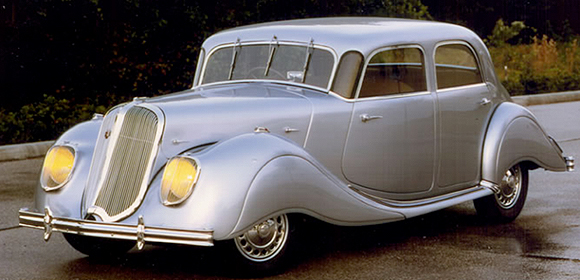
The Citroën Traction Avant 15-6 was referred to as the Queen of the Road when it was introduced in 1938, but two years before Panhard et Levassor showed audacious royal opulence when they introduced the Dynamic — a replacement for the company’s CS model at the Paris Motor Show in October 1936.
The CS Panoramique sedan debuted in 1934, introducing small quarter windows to the A-pillar in order to improve outward visibility (hence the “Panoramic” name).

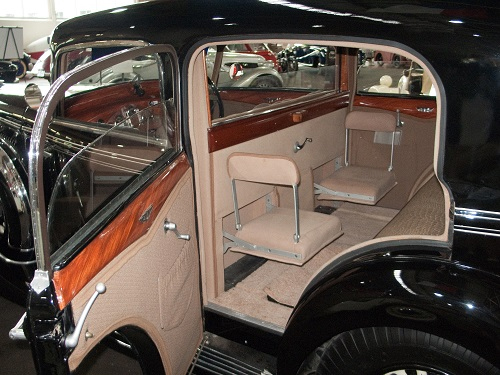
Panhard et Levassor’s in-house designer Louis Bionier came up with a Streamline Moderne design for the Dynamic, featuring front and rear wheel spats, two or three windscreen wipers and the split A pillars with curved glass inserts he pioneered on the earlier Panoramique. The headlights were integrated into the front wings, with headlamp surrounds that mimicked the shape of the front grille.
Similar to the Traction Avant, it was the first French car in the luxury class to feature a steel body welded together and constructed as a monocoque, without a separate chassis.
A “six-light” four-door saloon/sedan bodied version was offered with a long passenger cabin, but no trunk/boot. This version, introduced in the fall of 1937, could seat nine. A four-door saloon/sedan (“berline”) was also available with a shorter passenger cabin, but with a protruding boot/trunk.
The car was also unusually wide, (1.55m internal width), allowing for three abreast seating.
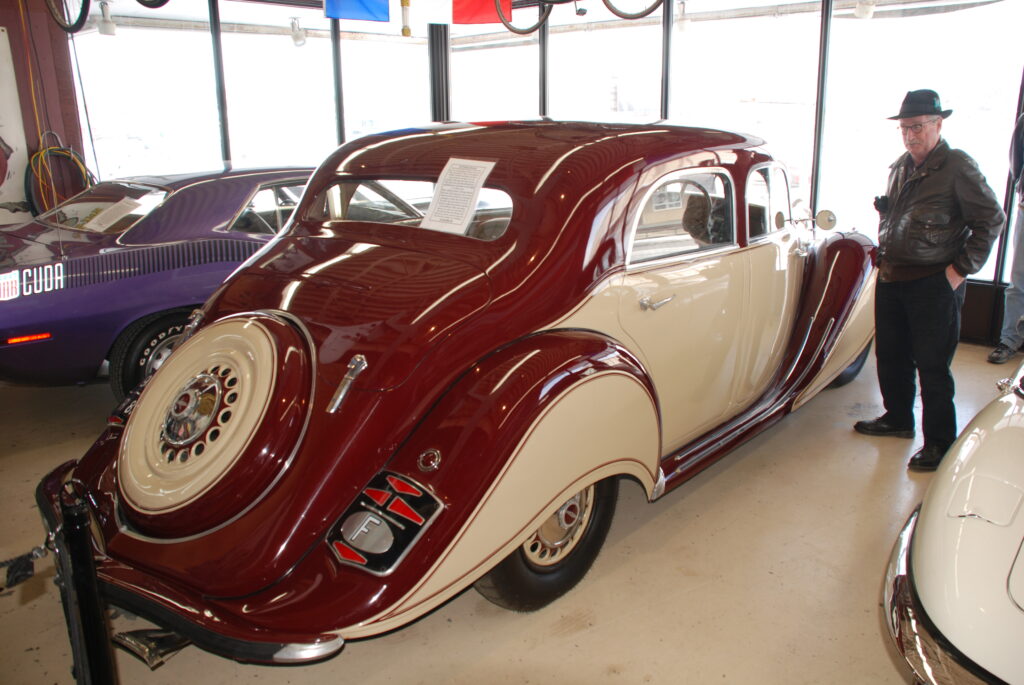
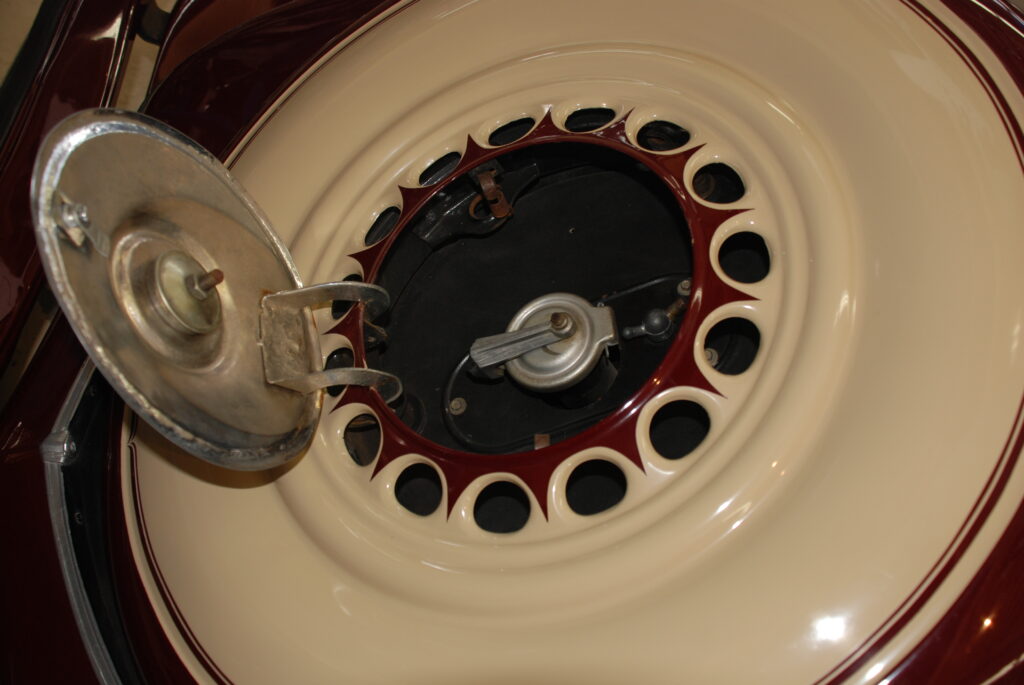
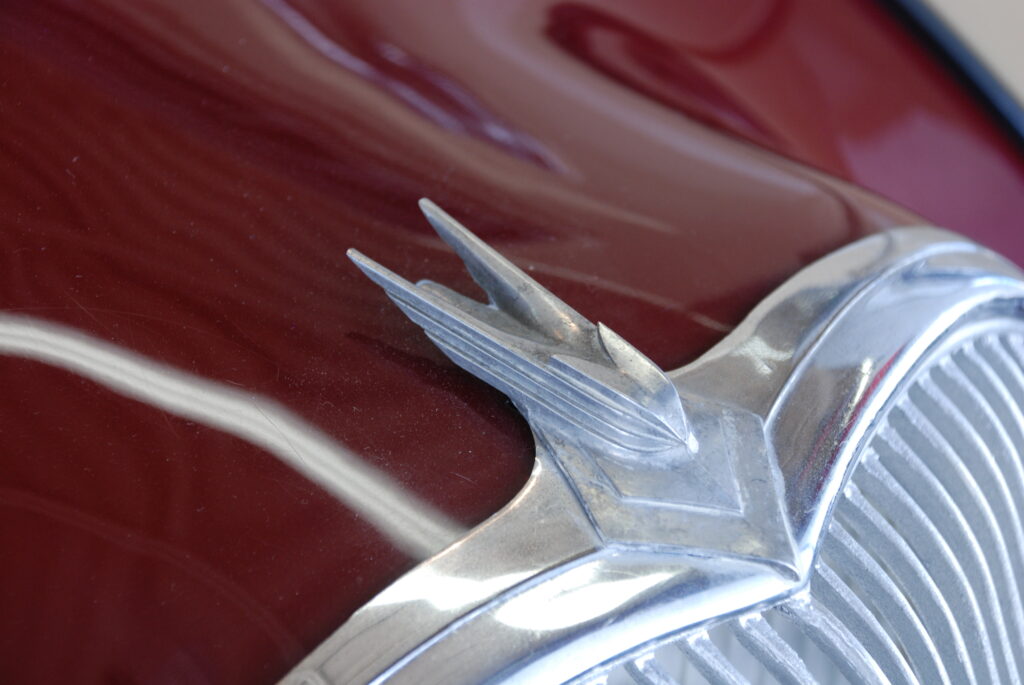
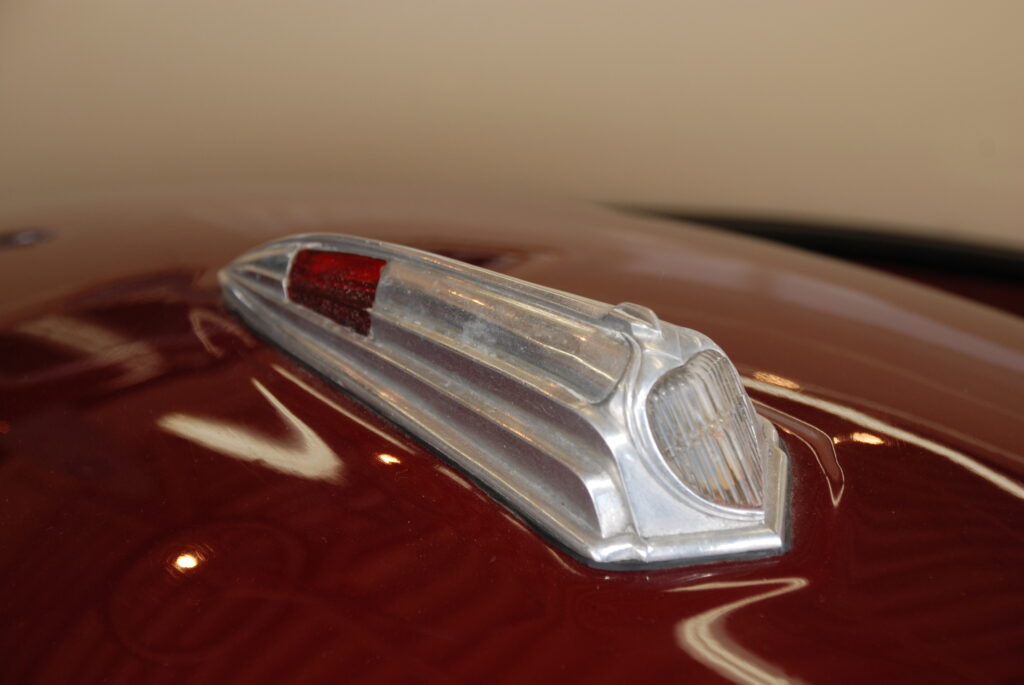
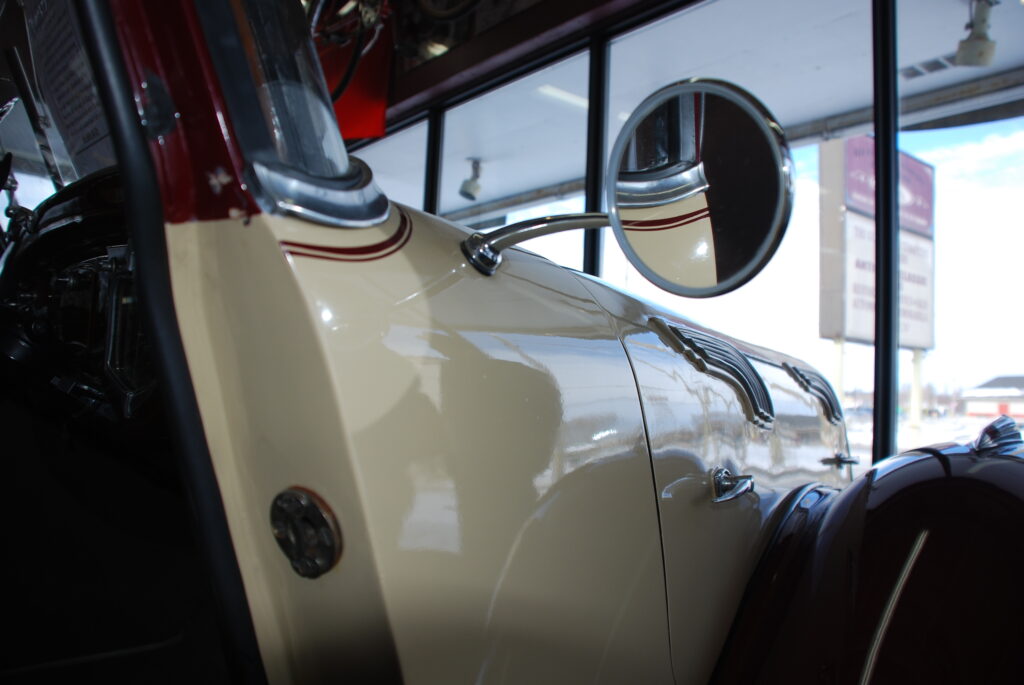
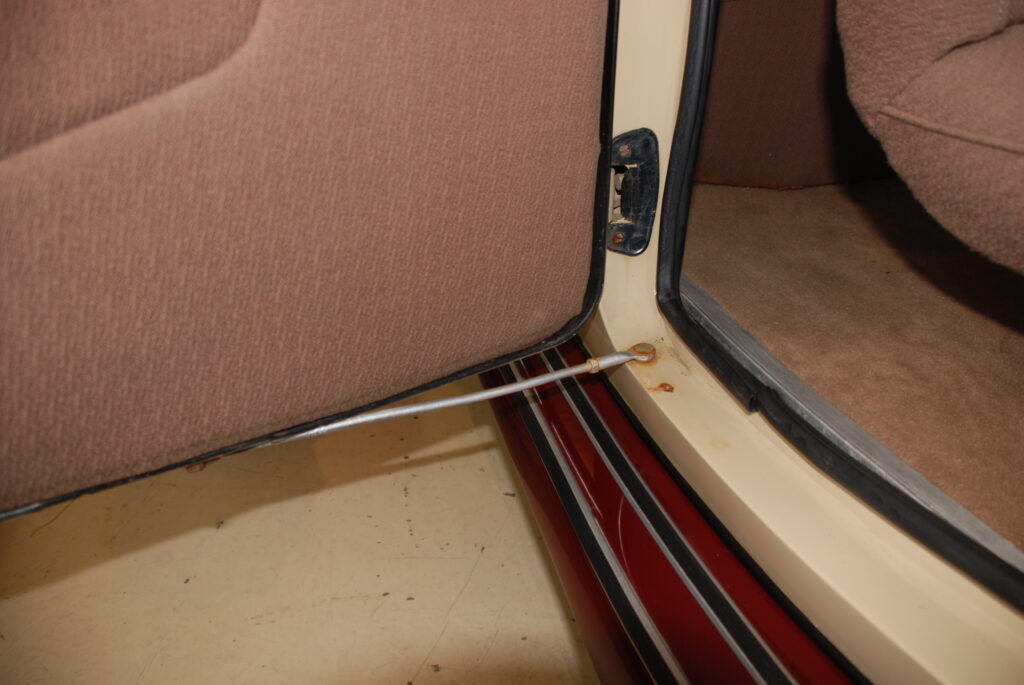
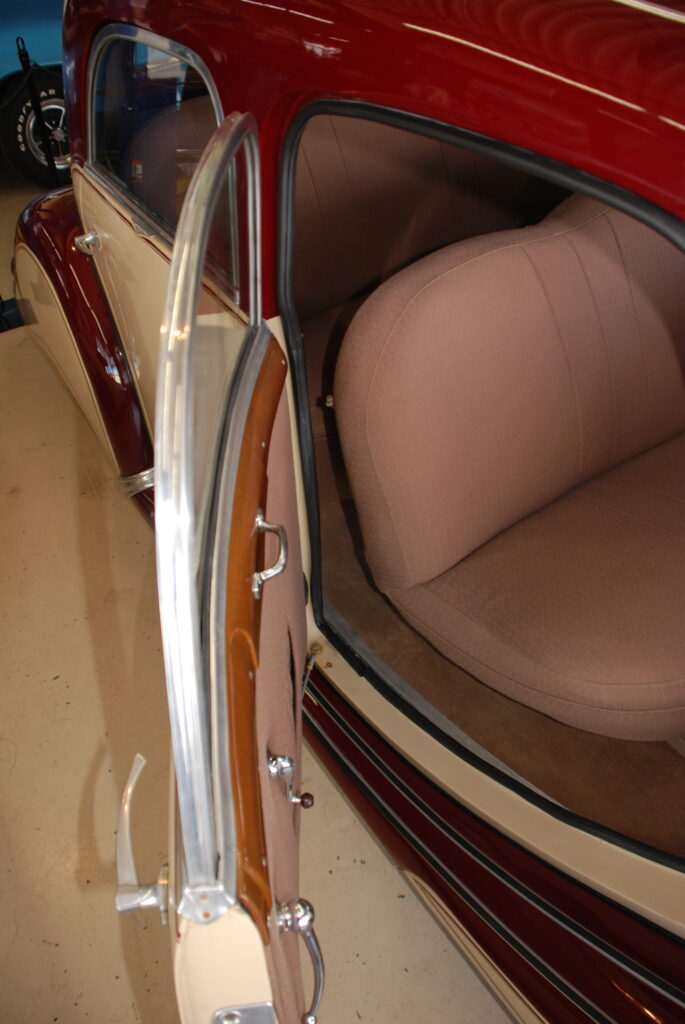

On early Dynamics the steering wheel was positioned slightly offset to the left of the middle of the dashboard. The centrally mounted steering was probably the feature that attracted the most comment when the car appeared at the 1936 Paris Motor Show.
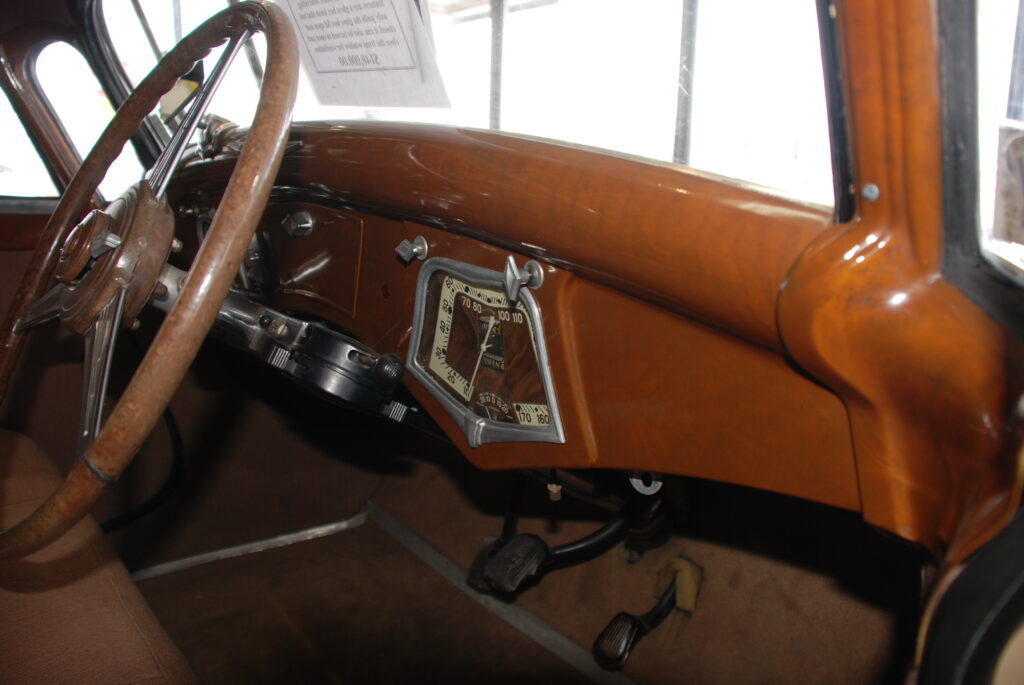
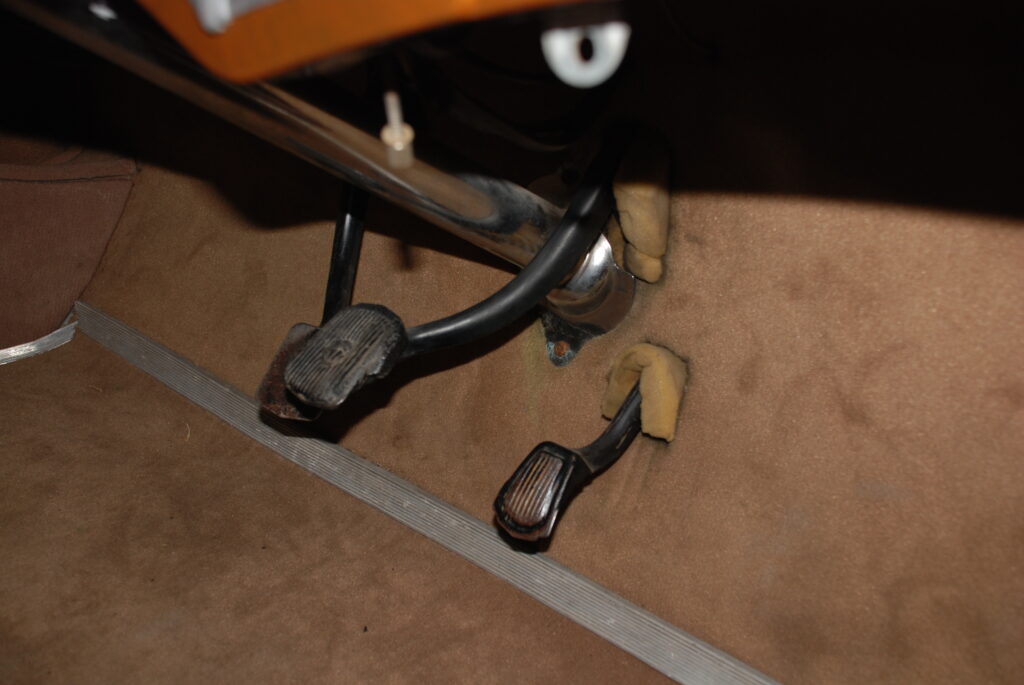
The company advertised it as a “common sense” solution during a period when French automakers were switching over from right hand drive (which had been virtually universal in France twenty years earlier) to left hand drive (which would be virtually universal in France twenty years later). It was hoped that this would provide a superior view out. However, the market-place found the central steering wheel an innovation too far and drivers complained about the contortions necessary to slide from the side of the wide car to the central position necessary to control it. Therefore, from 1939 the Dynamic featured a conventionally positioned steering wheel.
Aside from the central seating position, the Dynamic was also ahead of its time in having independent wishbone front suspension with torsion bars on all four wheels. Braking was hydraulic, with two separate circuits at the front and rear.
There were also two-seater coupé versions and a cabriolet version offered, but by the end of 1938 these “minority“ models had accounted for only 358 cars of 2,742 produced overall.
In addition to these and the sedans, a six-window Limousine with an available partition was introduced in 1938.
Engines
A first prototype, known as the Dynamic 20 CV, was presented in March 1936. This was powered by a six-cylinder in-line engine of 3,485 cm3 with cylinder diameters that indeed corresponded with the French 20 hp taxation class. However, the car that entered production and was offered for sale from May 1935 as the Dynamic 130 came with the six-cylinder in-line sleeve-valve engine of 2,516 cc from the predecessor model, the Panhard et Levassor CS. This placed it in the French 14 CV taxation class. The “130” in the name was to indicate a claimed top speed of 130 km/h (81 mph).
Along with the Dynamic 130, Panhard et Levassor offered a Dynamic 140, which shared its engine with the (initially still in production) “CS Spécial” model. The engine size on this version was 2,861 cc (16 CV). Actual claimed horsepower was 75 hp (55 kW) and it was this “Dynamic 140” that was the most popular with customers, 2,230 having been produced by 1940 when war brought production to an end. By this time the car had become the last production sleeve-valve-engined car in the world.
Variants
While three wheelbases were available, the shortest was largely restricted to the (soon discontinued) Coupé Junior model and the longest to the Berline. Most Dynamics (Majors) ended up having the 280 cm wheelbase. In 1937 Panhard et Levassor introduced a range topping “Dynamic 160”, as a successor to the Panhard et Levassor DS. This car was fitted with a 3834 cc (22 CV) version of the Panhard et Levassor six-cylinder in-line engine, with 100 PS (74 kW). 153 had been produced by 1938.
The small Dynamic 130 carried the X76 model code; it was discontinued for 1938. The 140 and 160 were originally called X77 and X80, after the move away from central steering for 1939 they became the X81 and X82 respectively.
Premium Cost
Panhard et Levassor Dynamics were relatively expensive, which reflected the technological progress that they represented. Less than six months after the October 1936 launch Panhard et Levassor updated their price list, many the prices published in February 1937 increased by more than 20%! After February 1937 the short wheelbase “Junior 130” (coupe) 14CV Dynamic was priced at 53,850 Francs while prices for the four door “Berline 130” started at 58,850 Francs. For comparison, price lists from Talbot, whose Minor was launched in October 1937 with a list of 42,500 Francs for a 13CV four seater compact four door “Berline” from a manufacturer with a more modern model range, left the listed prices for the Panhard et Levassor Dynamic looking optimistically high.
Wartime Production
In September 1939 France declared war on Germany and in June 1940 the German Army rapidly invaded and occupied Northern France. Before September 1939, unlike Renault, Panhard et Levassor had not supplied cars to the French army, but with the outbreak of war Panhard et Levassor received an order for 182 of the larger-engined Dynamics, with the emphasis on the long cabined “six-light” sedans/salons. The army cars, generally reserved for senior ranks, are in most instances recognizable from the spare wheel mounted on the outside of the rear panel. Civilian versions, even with the long cabin body, kept the spare wheel inside the car.
As the war progressed, Panhard et Levassor found it prudent to transfer production to their site at Tarbes in the extreme southwest of France, and a Gazogene powered version of the Dynamic was produced albeit only in small numbers.
Some Dynamics were assembled up until 1948, with what pieces remained in the factory, but most of the tools were destroyed during the bombings.
After World War II the company was renamed Panhard (without “Levassor”), and produced light cars such as the Dyna X, Dyna Z, PL 17, 24 CT and 24 BT.
However, lackluster sales resulted in Panhard succumbing to Citroën. A 25% stake in Panhard was purchased by Citroën in 1955 and then the company ended up progressively selling ownership to Citroën whereby full control of Panhard’s civilian vehicle division was achieved by 1965. In autumn of 1967 the last Panhard passenger car was built and from 1968 onward Panhard only made armored vehicles.
Jérome Collignon offers a critical styling analysis of the Dynamic on his blog:
https://jeromecollignon.blog4ever.com/panhard-dynamic-panegyrique#
And you can view an excellent documentary on the history of Panhard et Levassor in this article we previously featured on Citroënvie:
https://citroenvie.com/well-done-documentary-on-the-history-of-panhard/
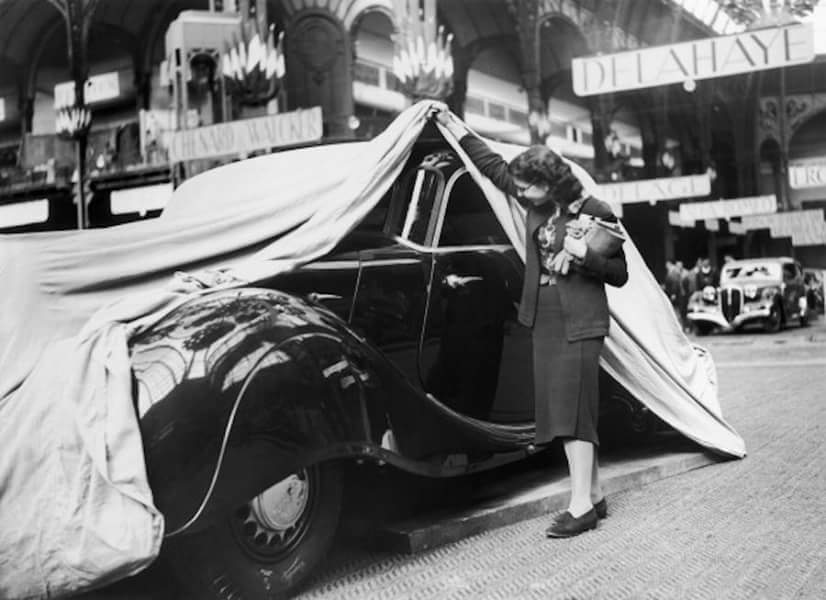
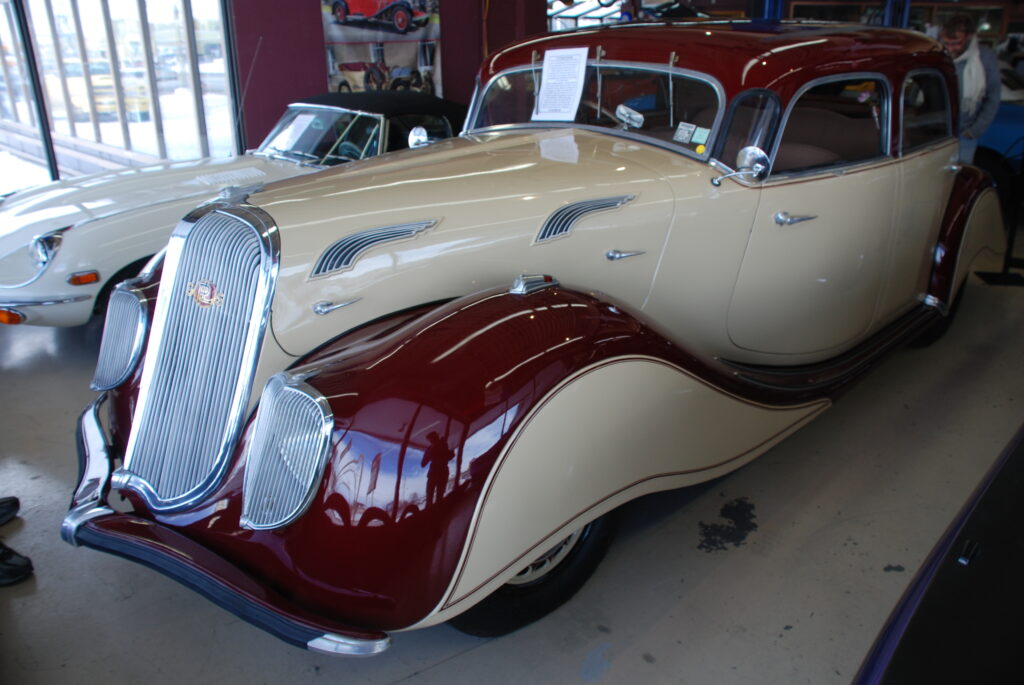


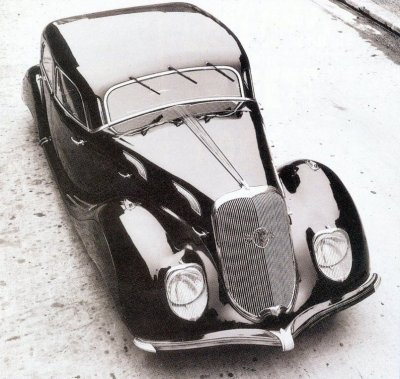
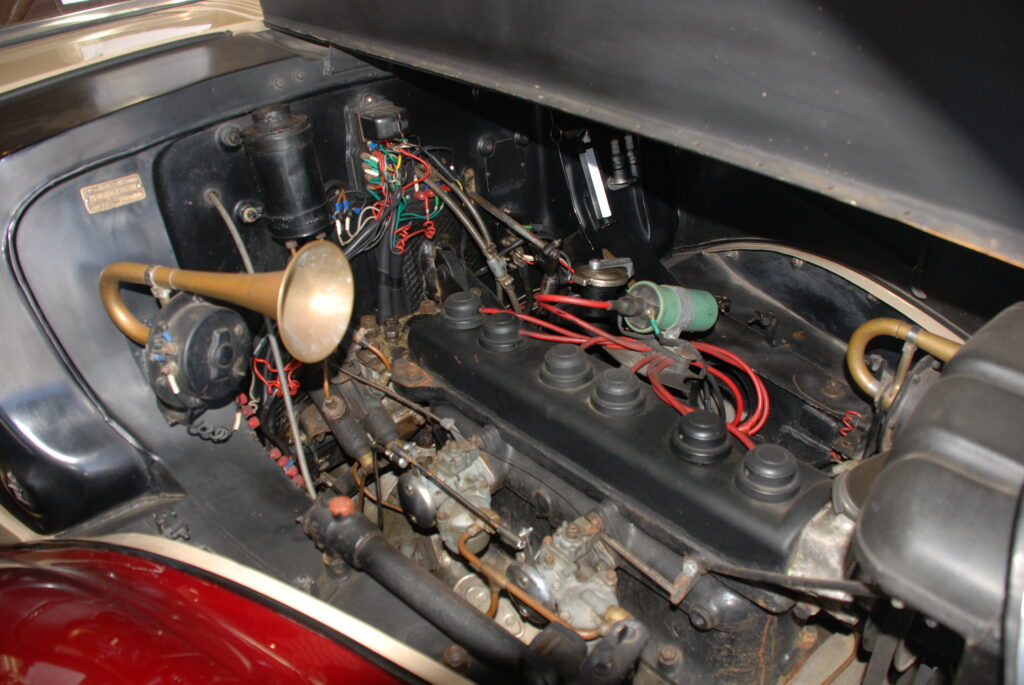

Bravo! Another great Citroenvie article. You have excellent writers.